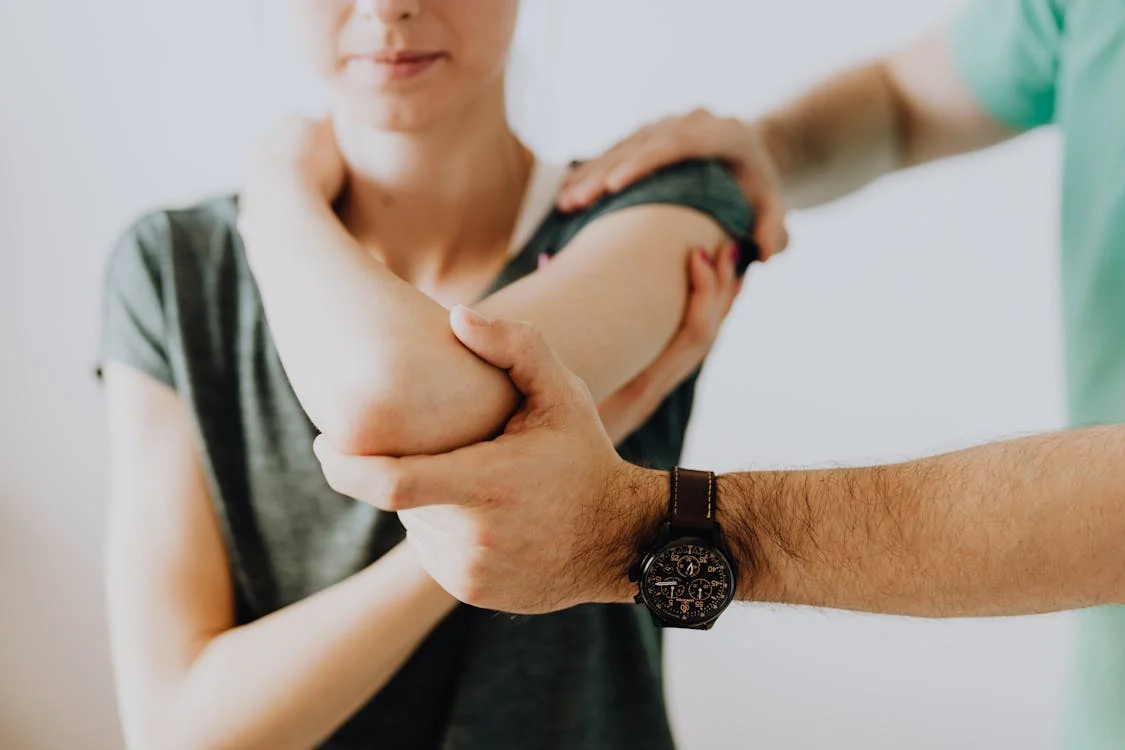On Wednesday, May 15, 2024 from 5:30pm - 6:30pm, we are hosting a FREE Foot Pain Workshop [ Online
] - Click here for more info
February 27, 2024

Let’s talk about something called “tennis elbow” and some issues that can happen with tendons, which are super important because they connect our muscles to our bones and help us move around. Imagine tendons like strong, stretchy bands that help you do everything from picking up your backpack to throwing a ball. But sometimes, they can get hurt or not work right, which can lead to pain and trouble moving.
First up is tennis elbow, which happens when the tendons in your forearm (the part of your arm from your elbow to your wrist) get irritated or hurt. This can happen if you play a lot of tennis or do the same arm movements over and over again, like painting or using tools. If you have tennis elbow, you might notice:
Then there’s something called tendonosis, which is a bit different. It’s not about the tendon being swollen or inflamed from an injury or doing too much all at once. Instead, tendonosis is about the tendon getting worn out over a long time. This can make the tendon weaker and less stretchy because it’s not getting enough blood flow. If you have tendonosis, you might feel:
So, tennis elbow can happen because of tendonitis or tendonosis. The big difference is that tendonitis is when the tendon gets swollen and sore right after getting hurt or used too much, while tendonosis is when the tendon slowly gets worn out over time. Tendonosis doesn’t really get swollen like tendonitis does, but it can make the tendon hurt and not work as well.
Both of these problems can make your arm hurt and make it tough to do everyday things, but they happen for different reasons and need to be taken care of in different ways.
Simply ignoring the problem and hoping it will get better on its own is often not the way to approach these problems. The longer you have the issue, the longer it will take to fully address and recover from the pain and problems you experience. This has to do with the change in actual cellular makeup of the tendons that we discussed above and the length of time it takes to reverse that process.
The good news…physical therapy has strong evidence showing it can help.
Cortisone injections have been found to not be very effective, and in fact, in reviews research suggests that participants studied who received cortisone injections are worse after 12 months compared to those who did not receive the injection. This can weaken the tendon further, especially with repeat injections, and therefore should be considered with caution and only if other evidence-based care and appropriate length of healing time has passed without improvement or change.
There is newer evidence emerging showing that dry needling combined with electrical stimulation in a specific pattern and protocol is effective at treating these stubborn tennis elbow situations. Our entire New Life PT team went through training on this updated protocol mid-February 2024 and are able to speak with you on whether or not you are a candidate for this treatment. If you have been seen prior but did not have this treatment performed, reach out to see if this is an option for you at this time.
Tennis elbow is a complex situation and simply following a few exercises found off the internet is not enough to fully address all the factors that go in to causing it. There is no one-size-fits-all approach that works for majority of people. It is an individualized problem that must be met with an individualized solution.
Finally, these situations require a lot of time and patience. It did not get this way overnight, and it will not improve overnight. One suggestion we have is to journal out and write down your symptoms – when they really began, current – where you feel the pain, with what activities, at what intensity, constant vs. intermittent, etc. Throughout your treatment over the course of several months continue to journal these items as sometimes small changes aren’t always evident right away but when you look back at where you have come from, you can more clearly see them. A generally rule of thumb on expectations is take how long you have been dealing with the problem, and double it. That is how long it could take to fully address and see resolution of symptoms. Example, if you have been dealing with tennis elbow problems for 3 months, it could take up to 6 months to fully be back to your “normal”.
This also speaks to the importance of not letting the problem go too long without getting it looked at. New Life PT accepts patients via direct access, so no referral needed from your provider to get started. If your insurance requires one, come in and see us, we will help you get one on your behalf after your initial evaluation.